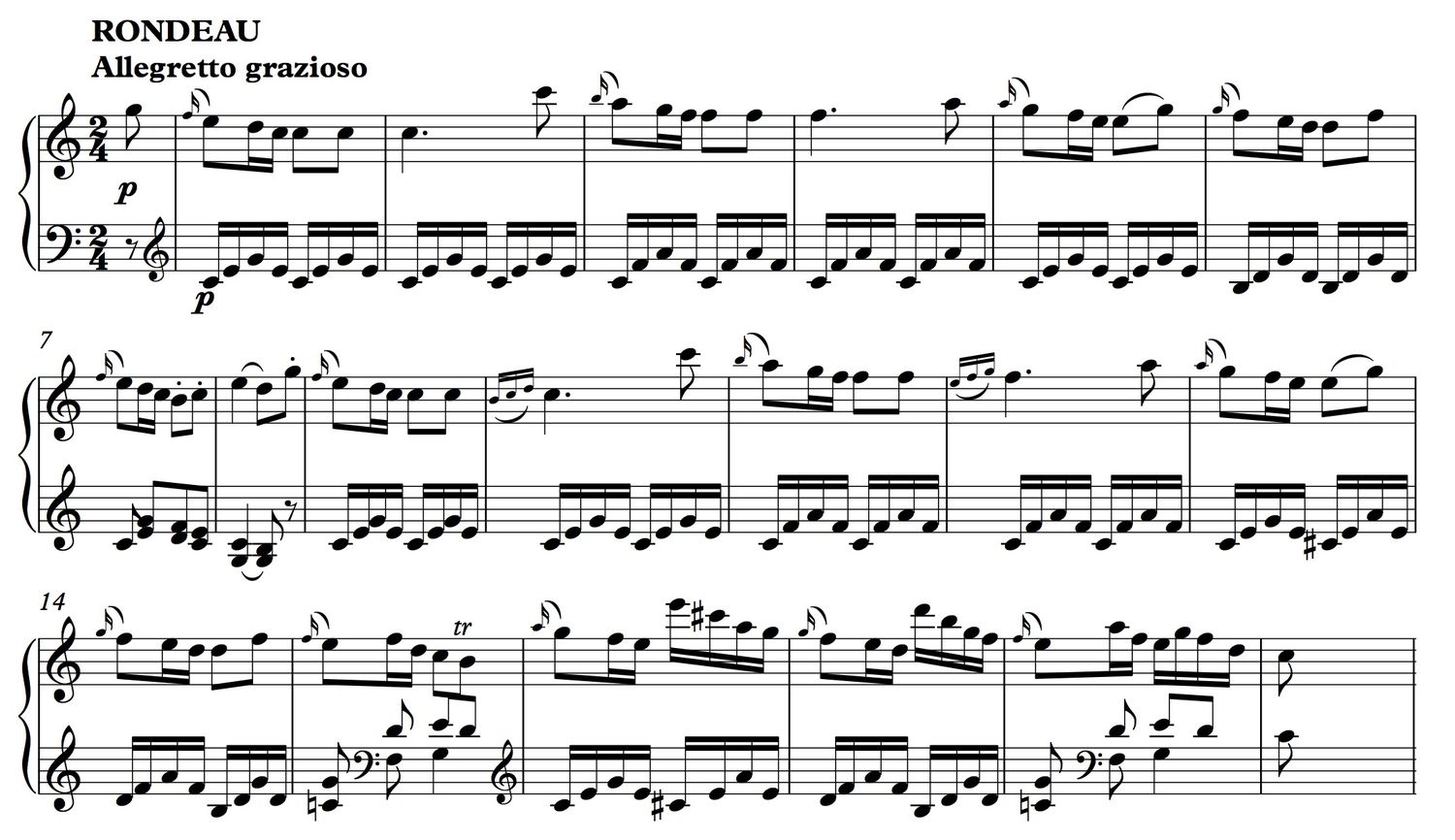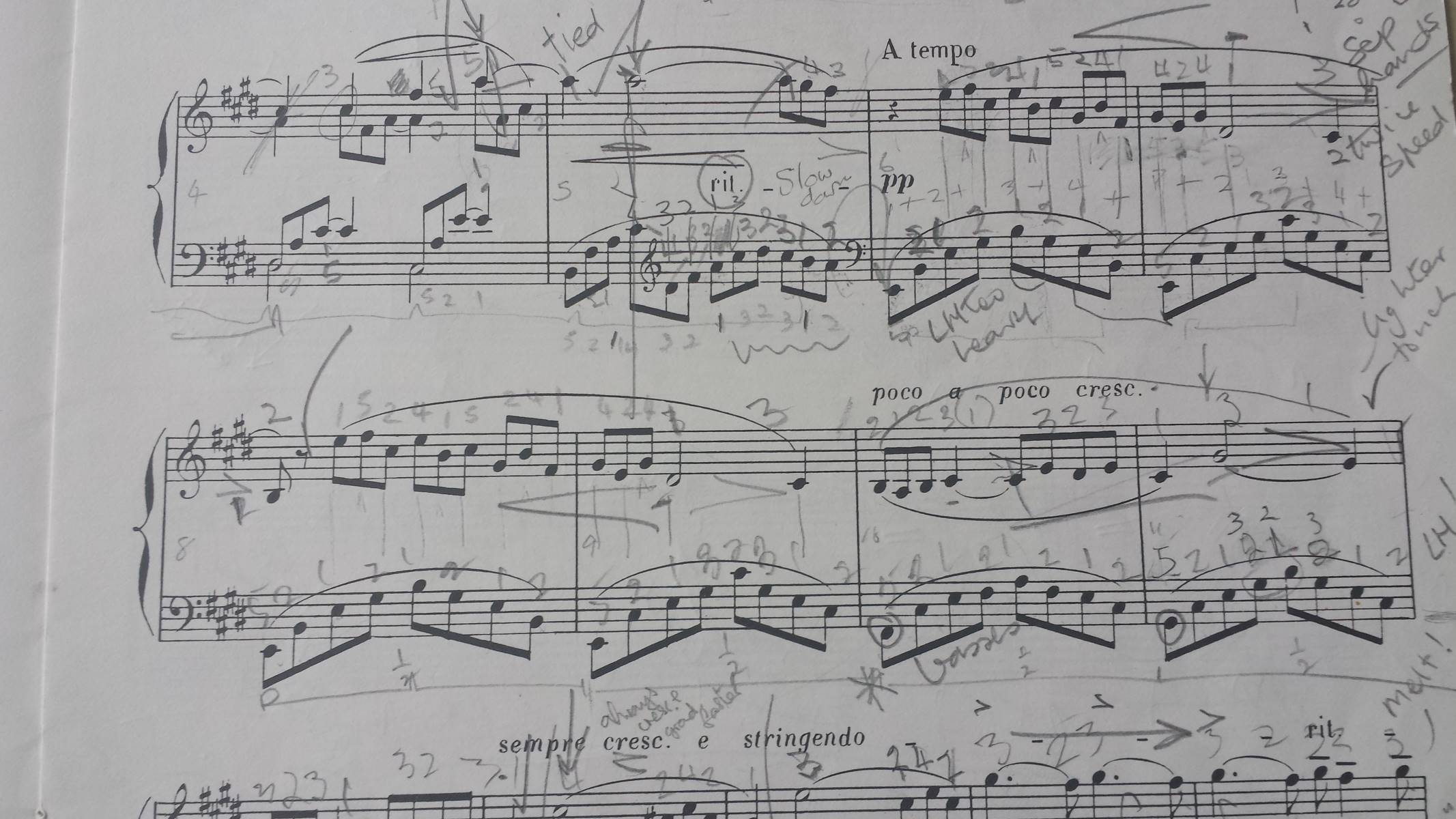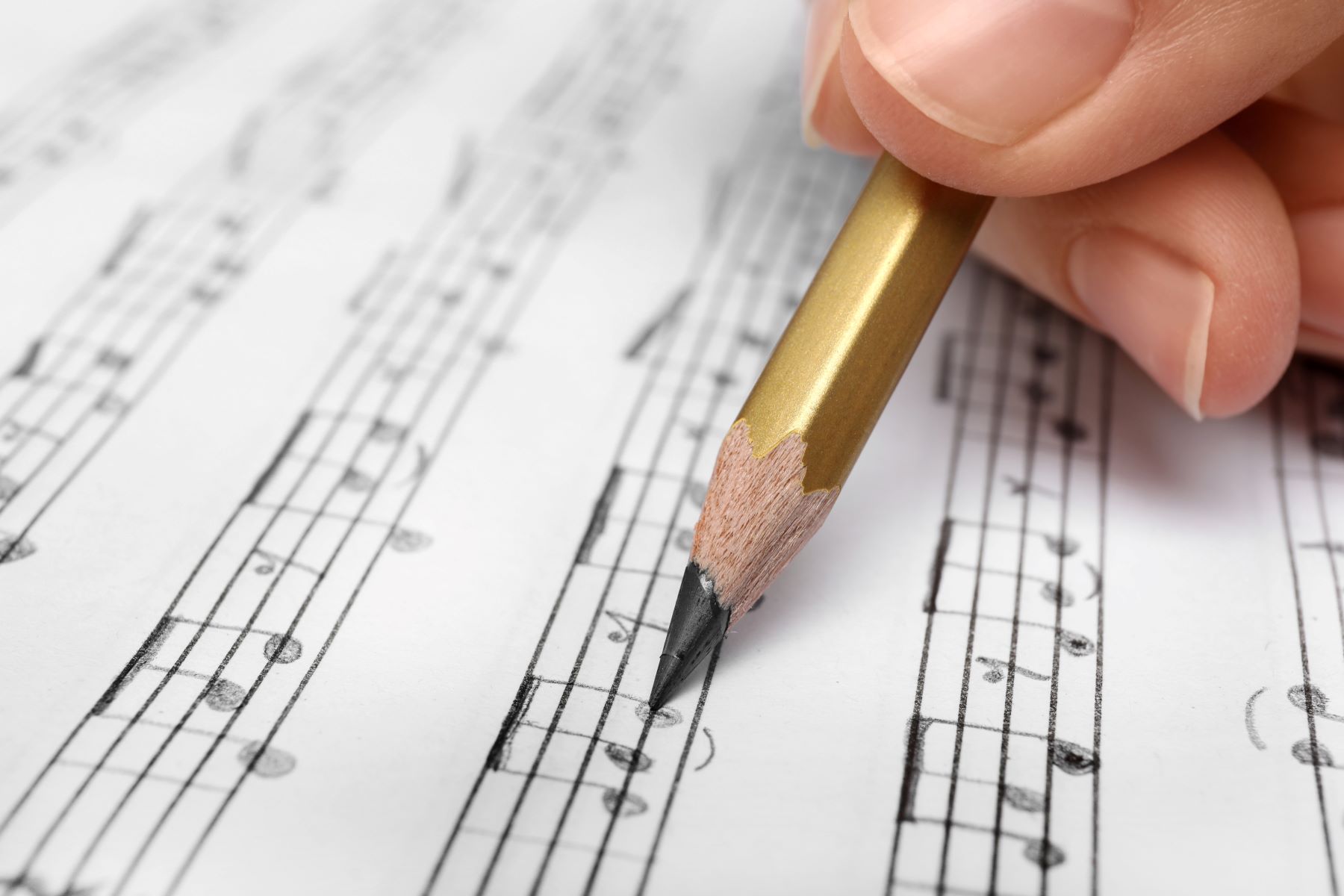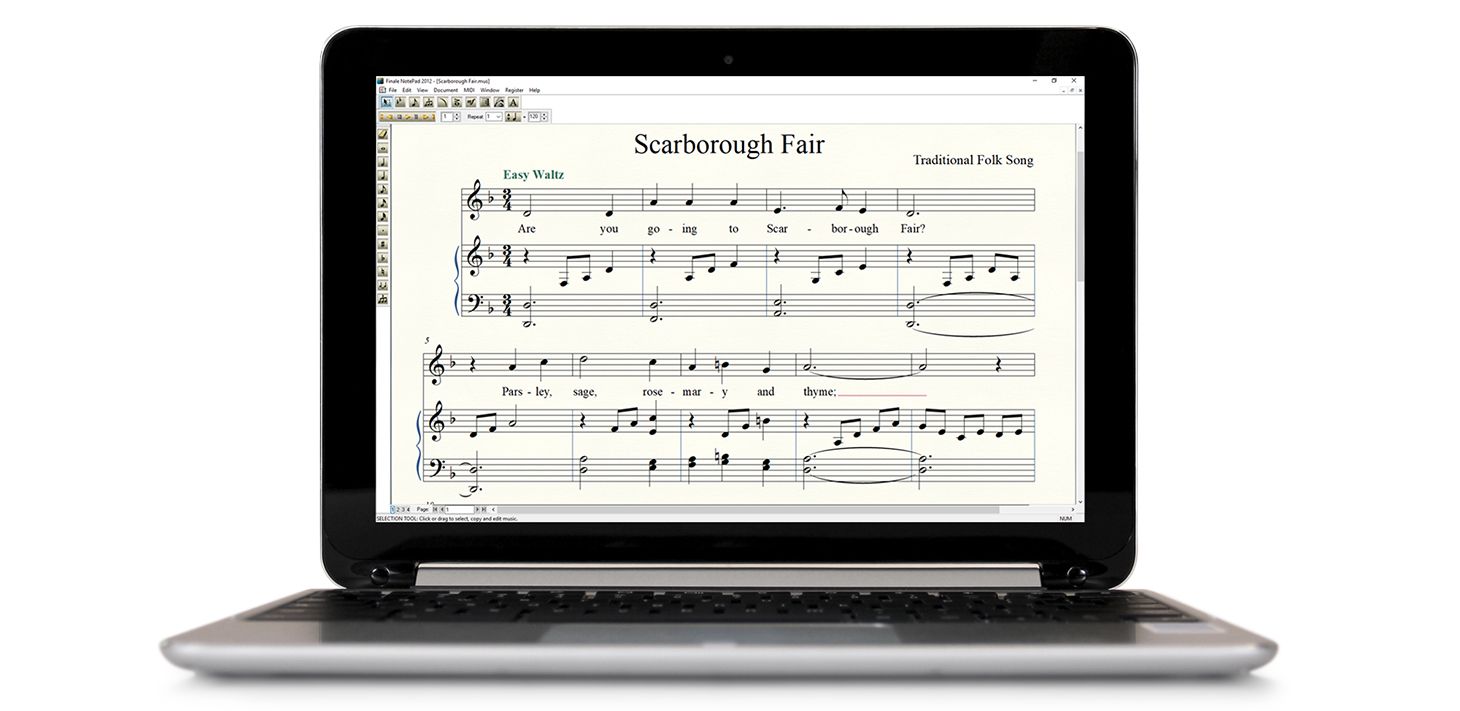Home>Production & Technology>Music Theory>How To Write A Cadential Extension Music Theory


Music Theory
How To Write A Cadential Extension Music Theory
Published: January 31, 2024
Learn how to write a cadential extension in music theory. Enhance your understanding of music theory with this comprehensive guide.
(Many of the links in this article redirect to a specific reviewed product. Your purchase of these products through affiliate links helps to generate commission for AudioLover.com, at no extra cost. Learn more)
Table of Contents
Introduction
When it comes to music theory, one concept that often intrigues composers and musicians alike is the cadential extension. This technique allows for the prolongation of a cadence, adding a sense of anticipation, tension, and resolution within a musical phrase. Understanding how to effectively write a cadential extension can greatly enhance the musicality and depth of your compositions.
A cadential extension occurs when a cadence, a harmonic progression that signifies the end of a musical phrase or section, is prolonged beyond its typical length. It is a way to delay the final resolution and create a sense of musical tension. By extending the cadence, composers can heighten the emotional impact of the music, create a sense of suspense, and captivate the listener’s attention.
Composing a cadential extension involves a deep understanding of harmonic progressions, voice leading, and musical form. It requires careful consideration of timing, pacing, and the overall structure of the piece. With some knowledge and creativity, you can effectively integrate cadential extensions into your compositions, adding richness and complexity to your musical creations.
In this article, we will explore the concept of cadential extensions in music theory. We will delve into the analysis of cadential extensions, discuss various techniques for writing them, and provide examples to illustrate their application in different musical contexts. Whether you are a composer looking to enhance your compositions or a music enthusiast wanting to deepen your understanding of music theory, this article will provide you with valuable insights into the world of cadential extensions.
Understanding Cadential Extensions
Before diving into the techniques of writing cadential extensions, it is important to have a solid understanding of what they are and how they function within a musical context. Essentially, a cadential extension prolongs a cadence, the harmonic resolution that typically marks the end of a musical phrase or section. By extending the cadence, composers can create a sense of anticipation and tension, heightening the emotional impact of the music.
Cadential extensions can take different forms and vary in length. They can range from a simple embellishment of the final chords to a more elaborate continuation of the harmonic progression. The goal of a cadential extension is to delay the final resolution, building suspense and drawing the listener deeper into the music.
One of the key elements in understanding cadential extensions is grasping the concept of tonal harmony. Tonal harmony is the harmonic system that underpins much of Western music. It revolves around the resolution of dissonant chords to consonant ones, creating a sense of stability and closure.
A typical cadence consists of a dominant chord (V) followed by a tonic chord (I). This progression creates a strong sense of resolution and closure. In a cadential extension, the dominant chord is prolonged, introducing additional chords and delaying the arrival of the final tonic chord.
Another crucial aspect of cadential extensions is voice leading. Voice leading refers to the smooth and logical movement of individual melodic lines within a musical composition. When writing a cadential extension, it is essential to ensure that the individual voices move in a coherent and satisfying manner, creating harmonic and melodic interest.
Cadential extensions can be found in various musical genres and styles. From classical compositions to contemporary pop songs, the use of cadential extensions adds depth and complexity to the music. By understanding the principles behind cadential extensions, you can employ this technique effectively in your own compositions, enhancing the overall musical experience for both yourself and your listeners.
Analyzing Cadential Extensions
When analyzing cadential extensions in music, it is important to focus on the harmonic progression, voice leading, and overall structure of the musical phrase. By dissecting these elements, we can gain a deeper understanding of how cadential extensions function and the impact they have on the overall composition.
First and foremost, let’s examine the harmonic progression within a cadential extension. As mentioned earlier, a typical cadence consists of a dominant chord (V) followed by a tonic chord (I). In a cadential extension, additional chords are inserted between the dominant and tonic to prolong the resolution. These intermediary chords can include subdominant chords (IV), secondary dominants, or even chromatic chords. The choice of chords within the extension will depend on the composer’s intentions and the desired emotional effect.
Next, consider the voice leading within the cadential extension. Each individual voice should move smoothly and logically from one chord to another. This creates an interesting and satisfying melodic and harmonic progression. Pay attention to any contrapuntal techniques employed, such as suspensions, passing tones, or pedal tones. These devices can add complexity and tension to the extension, enhancing its musical impact.
Furthermore, analyzing the overall structure of the musical phrase is crucial in understanding the purpose of the cadential extension. Look for signs of tension and release, as well as any rhythmic or melodic patterns that may be present. The cadential extension should fit cohesively within the larger musical context and contribute to the overall emotional journey of the composition.
When analyzing cadential extensions, it can also be helpful to consider the historical and cultural context of the music. Different musical styles and time periods may have their own unique interpretations and uses of cadential extensions. By exploring the works of renowned composers from various eras, you can gain insights into the different approaches to cadential extensions throughout music history.
Overall, analyzing cadential extensions allows us to gain a deeper appreciation for the complexity and artistry behind these musical devices. By examining the harmonic progression, voice leading, and structure, we can unravel the intricacies of the composition and better understand the impact that the cadential extension has on the overall musical experience.
Techniques for Writing Cadential Extensions
Now that we have a solid understanding of cadential extensions and how they function, it’s time to explore some techniques for writing them effectively in your own compositions. These techniques provide a roadmap for creating cadential extensions that are harmonically interesting, melodically compelling, and emotionally impactful.
- Embellishment of the Dominant Chord: One approach to writing a cadential extension is to embellish the dominant chord (V). This can be done by adding additional tones, such as suspensions or passing tones, that create melodic interest and prolong the resolution. Experiment with different embellishments to find the one that fits the mood and style of your composition.
- Secondary Dominants: Another technique is to introduce secondary dominant chords into the cadential extension. Secondary dominants are chords that temporarily tonicize a different chord within the key. By incorporating these chords, you add harmonic tension and complexity to the progression, delaying the final resolution and creating a sense of anticipation.
- Chromaticism: Using chromatic chords or chromatic voice leading can also be a powerful technique for writing cadential extensions. Adding chromatic tones within the extension adds richness and unpredictability to the harmonic progression. It can create a sense of tension and dissonance, leading to a more satisfying resolution.
- Modulations: Explore the option of modulation within your cadential extension. Modulating to a related key can create a dramatic shift in tonality and further extend the resolution. Whether through a direct modulation or a sequence of chords leading to the new key, this technique can add depth and surprise to your composition.
- Rhythmic Variations: Don’t overlook the power of rhythm in creating an engaging cadential extension. Experiment with rhythmic variations and syncopation to give your extension a unique rhythmic feel. This can add energy and drive, enhancing the anticipation and tension experienced by the listener.
Remember, these techniques are not mutually exclusive, and you can combine them in various ways to create your own unique cadential extensions. Trust your musical instincts and experiment with different approaches. The key is to find the techniques that best serve your composition and evoke the desired emotional response in your audience.
Keep in mind that when writing cadential extensions, it’s important to maintain a sense of balance and coherence. While the extension may prolong the resolution, it should still fit within the overall structure and musical context of the composition. Careful attention to voice leading, harmonic progression, and emotional impact will ensure that your cadential extensions serve as powerful musical statements.
Examples of Cadential Extensions
To illustrate the concepts and techniques discussed so far, let’s examine some examples of cadential extensions in different musical genres and styles. These examples will highlight the various ways in which composers have utilized cadential extensions to create musical tension, prolong resolutions, and enhance the overall emotional impact of their compositions.
Example 1: Classical Music
In classical music, Mozart’s Symphony No. 40 in G minor showcases a beautifully crafted cadential extension. In the final movement, just before the closing section, Mozart extends the dominant harmony through the use of chromaticism and sequential patterns. The tension builds as he delays the arrival of the tonic, heightening the emotional impact of the resolution.
Example 2: Jazz
In the world of jazz, John Coltrane’s “Giant Steps” provides an excellent example of a cadential extension through the use of harmonic substitutions and modulations. As the chords progress, Coltrane introduces secondary dominants and modulates to different keys, creating a whirlwind of harmonic complexity. The extended resolution adds intensity and excitement to the improvisations.
Example 3: Pop Music
Even in popular music, cadential extensions can be found. In Adele’s hit song “Someone Like You,” the emotional power of the chorus is heightened by a cadential extension. Adele uses a combination of rhythmic variations, secondary dominants, and vocal melismas to prolong the resolution and intensify the heartfelt lyrics.
Example 4: Film Scores
Film scores are another domain where cadential extensions are frequently employed. In Hans Zimmer’s “Time” from the movie “Inception,” there is a haunting cadential extension that consists of suspended chords and gradual harmonic progression. The extension creates a sense of mystery and anticipation, perfectly complementing the atmospheric nature of the film’s soundtrack.
These examples demonstrate the versatility of cadential extensions across different musical genres and styles. They showcase how composers have ingeniously used techniques such as chromaticism, modulations, and rhythmic variations to prolong the resolution and create captivating musical moments.
By studying these examples and analyzing the cadential extensions within them, you can gain inspiration and insight into how to apply these techniques to your own compositions. Experiment with different harmonic progressions, voice leading techniques, and rhythmic variations to craft unique and compelling cadential extensions that elevate your music to new heights.
Conclusion
Through this exploration of cadential extensions in music theory, we have uncovered the intricate techniques and nuances that composers utilize to prolong resolutions and create musical tension. Understanding the principles behind cadential extensions allows us to enhance our compositions, adding depth, complexity, and emotional impact.
We started by delving into the concept of cadential extensions, learning that they prolong the cadence and create a sense of anticipation and tension. We then analyzed the different elements involved, such as harmonic progressions, voice leading, and overall musical structure, to gain a deeper understanding of how cadential extensions function within a composition.
Next, we explored various techniques for writing cadential extensions, including embellishment of the dominant chord, the use of secondary dominants, chromaticism, modulations, and rhythmic variations. These techniques give composers the tools to craft unique and compelling cadential extensions that fit the style and mood of their compositions.
Lastly, we examined examples of cadential extensions across different musical genres, including classical, jazz, pop, and film scores. These examples demonstrated the versatility of the concept and showcased how composers have creatively employed cadential extensions to captivate listeners and create memorable musical moments.
By incorporating cadential extensions into our own compositions, we can elevate our music to new heights. The careful attention to harmonic progression, voice leading, and emotional impact ensures that our cadential extensions serve as powerful musical statements within the larger musical context.
Whether you are a composer looking to enrich your compositions or a music enthusiast seeking a deeper understanding of music theory, the knowledge of cadential extensions will undoubtedly add depth and complexity to your musical experience. So go ahead and experiment with the techniques discussed, embrace your creativity, and let your compositions flourish with captivating cadential extensions.











